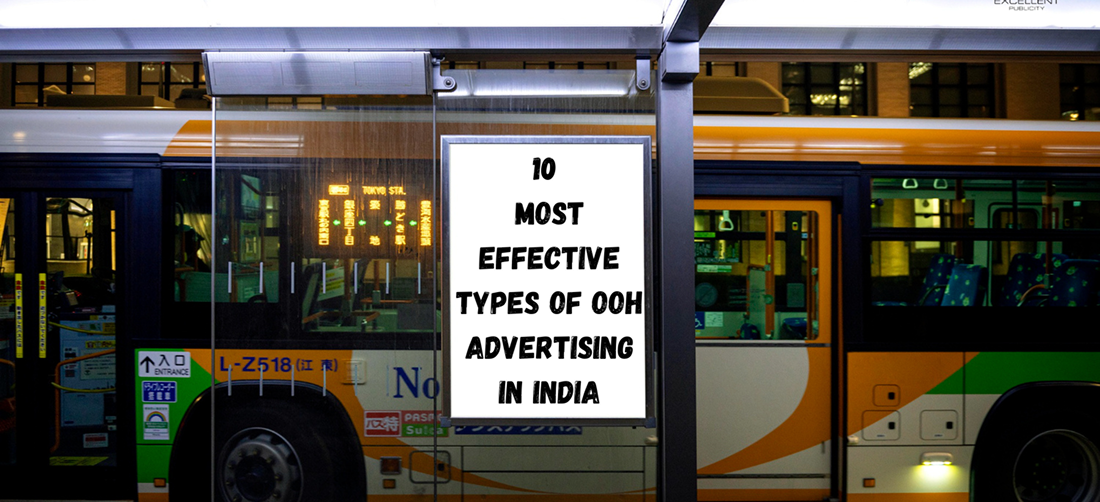Out-of-Home (OOH) advertising remains one of the most powerful channels for brands aiming to build large-scale visibility and reinforce recall in the physical world. With India’s increasing urban mobility, diverse geography, and growing infrastructure, out-of-home advertising offers brands unique and high-impact opportunities to reach consumers where they live, travel, shop, and commute.
This blog explores the 10 most effective types of OOH advertising in India, helping marketers choose the right out-of-home advertising media for their campaign goals. Whether you're targeting mass awareness, hyperlocal promotion, or high-end brand placement, understanding the types of OOH formats available can guide your media strategy and budget allocation.
1. Roadside Billboards & Hoardings
Overview: Traditional billboards and hoardings are among the most recognizable formats in Indian OOH. These large-scale static displays are placed along highways, arterial roads, and high-footfall intersections.
Why do they work?
- Massive visibility for brand awareness.
- Ideal for sustained messaging.
- Constant exposure (24/7).
Best for: FMCG, real estate, automotive, and political campaigns.
2. Digital Billboards (DOOH)
Overview: Digital Out-of-Home (DOOH) formats use LED screens to display dynamic video, animated creatives, or rotating messages. DOOH can be updated in real-time and is increasingly popular in Tier 1 and Tier 2 cities.
Why do they work?
- High visual impact.
- Flexibility in creative rotation.
- Time-based targeting (e.g., morning coffee ad, evening food delivery ad).
Best for: Retail, e-commerce, entertainment, tech brands.
3. Transit Advertising (Bus, Taxi, Metro)
Overview: Transit media includes advertisements placed on or inside buses, taxis, auto-rickshaws, and metro trains, making it one of the most mobile forms of out-of-home advertising.
Why do they work?
- Continuous movement means high reach across geographies.
- Targets both pedestrians and fellow commuters.
- Particularly effective in urban traffic conditions.
Best for: Hyperlocal brands, app-based services, quick commerce, public service messages.
4. Street Furniture (Bus Shelters & Kiosks)
Overview: Street furniture includes media placed on public infrastructure such as bus shelters, public toilets, benches, phone booths, and information kiosks.
Why do they work?
- High dwell time locations (e.g., waiting for a bus).
- Captive audience.
- Great for neighborhood branding.
Best for: Education, healthcare, local businesses, mobile networks.
5. Airport Advertising
Overview: Airports provide premium out-of-home advertising media targeting high-income travelers. Formats include digital screens, backlit displays, baggage claim ads, and aerobridge branding.
Why do they work?
- Affluent and high-intent audience.
- Long dwell times.
- Brand-safe environment with minimal distractions.
Best for: Luxury, banking, travel, automobiles, electronics.
6. Mall & POP Displays
Overview: In-mall advertising covers static and digital ads placed at entrances, escalators, food courts, and store facades. POP (Point-of-Purchase) displays target customers near decision points.
Why do they work?
- Targets shoppers in buying mode.
- Strong visual presence at high-traffic points.
- Excellent for tactical promotions.
Best for: Retail, FMCG, fashion, D2C brands.
7. Digital Kiosks & Interactive Panels
Overview: These are free-standing digital units placed in public areas like malls, cinemas, tech parks, and transit hubs. Some offer touchscreen or motion-based interactivity.
Why do they work?
- Engaging, high-tech user experience.
- Can display multiple ads in rotation.
- Often integrated with data collection or QR-based interaction.
Best for: Real estate, telecom, fintech, smart gadgets.
8. Ambient & Guerrilla OOH
Overview: Ambient advertising uses unconventional formats and environments (e.g., floor graphics, staircases, elevators), while guerrilla OOH is designed to surprise or engage people in high-footfall or unexpected places.
Why do they work?
- High shareability and social media buzz.
- Breaks through ad fatigue with creativity.
- Memorable, especially among younger audiences.
Best for: Youth-focused brands, startups, entertainment, FMCG.
9. Mobile Billboards & Vehicle Wraps
Overview: Mobile billboards involve branded vehicles with large hoardings or LED screens moving through city routes. Vehicle wraps include full or partial branding of delivery trucks or commercial vehicles.
Why do they work?
- Combines mobility with visibility.
- Hyperlocal targeting with flexible routes.
- Suitable for event promotions or product launches.
Best for: Food & beverage, events, and new product rollouts.
10. Poster Panels & Wallscapes
Overview: Poster panels are small to medium-sized displays placed on poles, footpaths, and building exteriors. Wallscapes are large painted or vinyl-covered building sides, especially in semi-urban and rural India.
Why do they work?
- Cost-effective for high-frequency reach.
- Great for regional and vernacular messaging.
- Often used in elections or social campaigns.
Best for: Local brands, political parties, mass-market FMCG, and pharma.
Choosing the Right Format for Your Campaign
The effectiveness of any out-of-home advertising media depends on campaign objectives, budget, geography, and audience profile. Here’s how to make an informed choice:
- Awareness campaigns: Use high-visibility formats like billboards, DOOH, and airport ads.
- Hyperlocal targeting: Go for transit, street furniture, and mobile billboards.
- Engagement and interaction: Leverage digital kiosks or guerrilla OOH.
- Premium placement: Invest in malls, airports, and metro branding.
Work with a strategic OOH agency to align formats with goals, audience behavior, and creative storytelling.
Measuring OOH Campaign Effectiveness
While traditional OOH was often seen as hard to measure, today’s campaigns can be assessed through several metrics:
- Impression estimates: Based on footfall, traffic, and dwell time data.
- Mobile retargeting: Using geofencing to serve digital ads after OOH exposure.
- QR codes or vanity URLs: Trackable CTAs on billboards and kiosks.
- Sales lift analysis: Compare sales in regions where OOH was activated vs. control regions.
- Brand lift surveys: Pre- and post-campaign recall and awareness tracking.
DOOH offers even more data points, including play counts, screen time, and audience engagement.
The Future of OOH in India
The Indian OOH industry is rapidly modernizing with a shift towards smart infrastructure and programmatic DOOH. Future trends include:
- AI-led targeting: Showing ads based on real-time footfall or weather conditions.
- Sustainability: Eco-friendly printing and solar-powered billboards.
- Omnichannel integration: Linking OOH with mobile, OTT, and in-app campaigns.
- Tier 2 and Tier 3 growth: Rural OOH formats (like wall paintings and pole ads) remain highly effective in Bharat markets.
As digital and physical worlds blend, OOH + DOOH strategies will dominate brand media plans across industries.
Conclusion & Call-to-Action
OOH advertising in India continues to offer unmatched opportunities to capture consumer attention at scale. From traditional hoardings to cutting-edge digital panels, the types of OOH advertising available today allow brands to tailor campaigns across cities, regions, and consumer moments.
If you're planning your next campaign and want to make every impression count, working with an experienced OOH partner can make all the difference. At Excellent Publicity, we help brands activate impactful out-of-home advertising media across India, driving visibility, relevance, and results.
Looking to explore the right OOH format for your brand? Reach out to Excellent Publicity for customized outdoor advertising solutions.



